Japanese Fashion
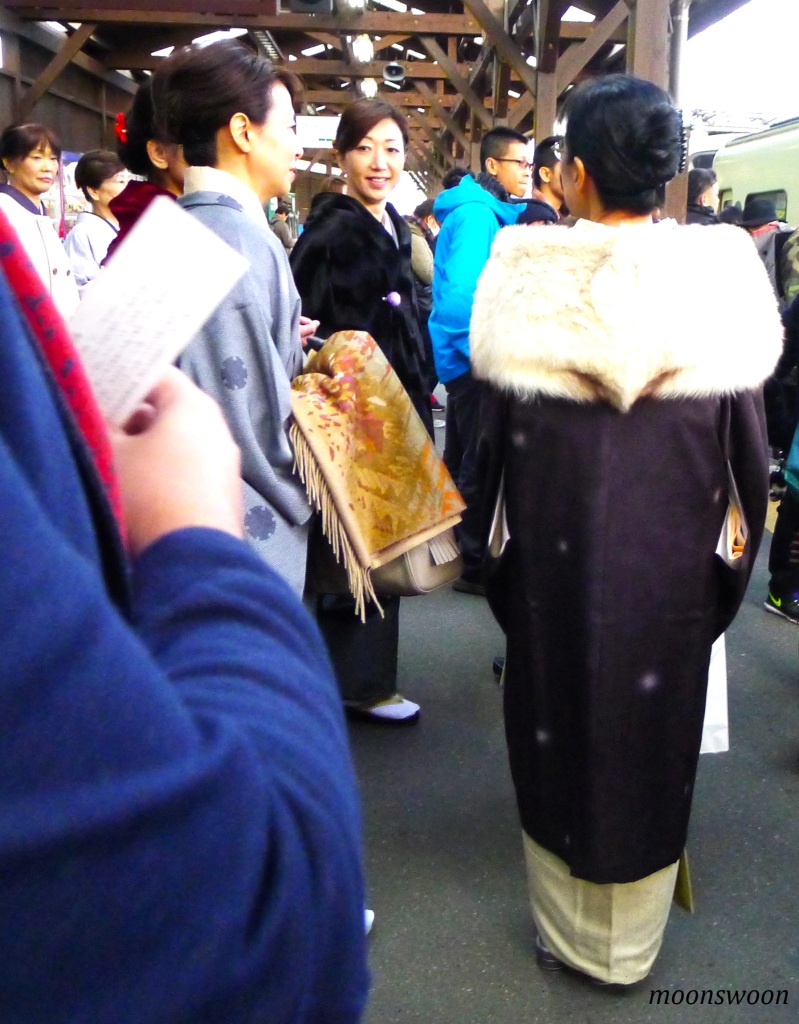
Japan has had centuries of serious fashion scenes…so serious that at one point in its history, fashion became a threat to the social order of its society!
Japan’s fashion world has been so colorful – from their distinctly Japanese form of clothing during ancient times, to the rapidly-evolving fashion industry of the modern times.
Kimono is a traditional Japanese robe worn by every Japanese from the Heian period (794 to 1185) up to the Edo period (1603-1868). The kimono style had interestingly evolved through time. When it was introduced during the Heian period, the focus was more on the cut, fabric and comfort. From the Kamakura Period (1192-1338) to the Edo period (1603-1868), it revealed information about the status of the wearer. There was a distinction of colors and patterns for the samurai of each realm. Each noble clan had a crest and the circular emblems were either on the sleeves or back of their kimonos. The styles also revealed the marital status of the wearer – unmarried women wore long sleeves with bold designs while married women wore shorter sleeves with subdued designs.
As arts and trade continued to thrive during the Edo period, merchants and artisan classes or chōnin came to control much of the country’s wealth. Despite the wealth of these chōnins, they couldn’t elevate their social status so they splurged on clothes and had such a display of opulence. It was an overwhelming display which resulted to unhealthy competition among the rising wealthy populace. The shogun viewed this as a threat to the social order that he imposed a dress code – there were restrictions on the designs and fabrics of kimonos and only nobles and those from the military class could wear the elegant Japanese robes.
Wearing of kimonos gradually declined because of the western influence during the Meiji period (1868-1912). The Meiji government abolished the dress code imposed by the shogun and in 1871, made an impetuous nod to western glamour. The Emperor imposed that government officials should wear western-style clothes at work.
After WWII, the young generation adopted the western-style clothing but kimonos were still used by some of the older generation. During these modern times, kimonos are only being worn during special occasions such as tea rituals, weddings, funerals, and traditional events.
Today, Tokyo is one of the world’s leading cities for fashion. 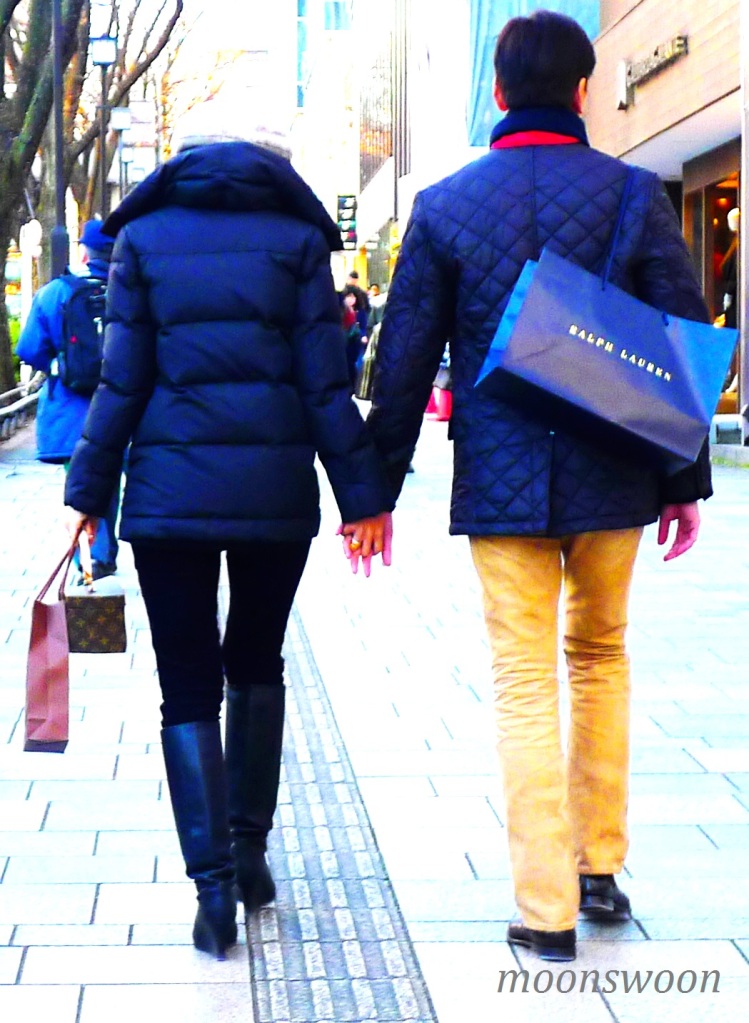
Here in Omotesando-dori, a tree-lined boulevard, you can find chic establishments that carry the hallmark of quality. There is a high degree of opulence in this fashion area with European and Japanese designer brands, antique shops and a four storey Kiddy Land. 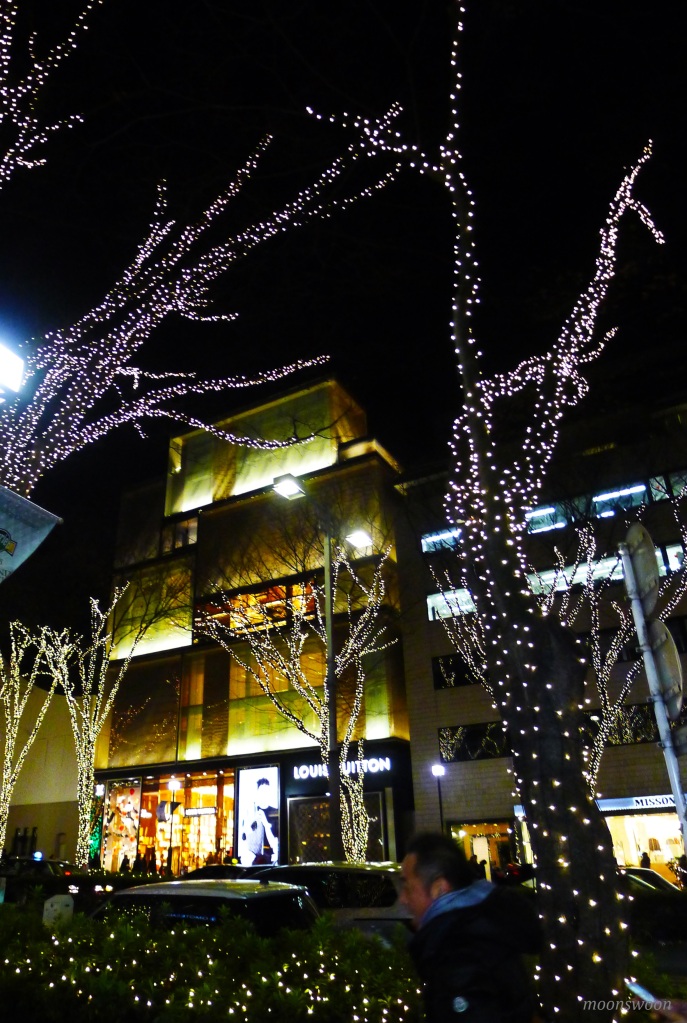
Otomesando is Tokyo’s answer to Paris’ Champs-Elysees. 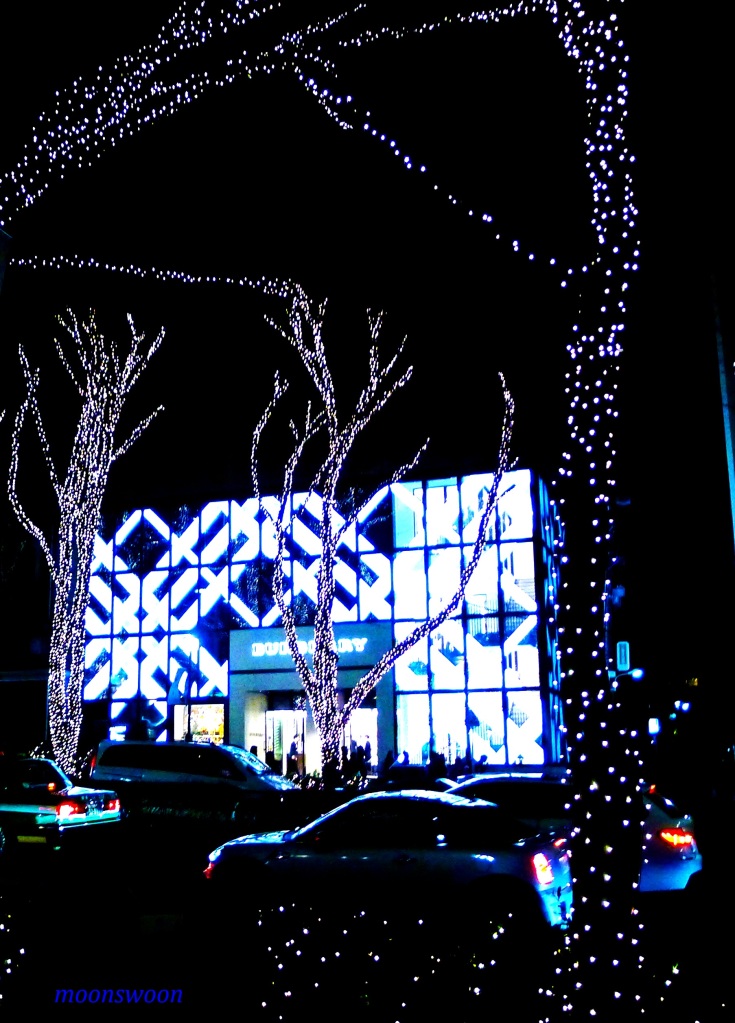
Japan boasts of world-famous designers and Rei Kawakubo, the creator of the brand Comme des Garçons, played a major role to the rise of these Japanese designers and labels which started with her controversial collection debut in Paris in 1981. This is the Comme des Garçons’ flagship store is in Aoyama, a broad high-end fashion avenue in Tokyo. 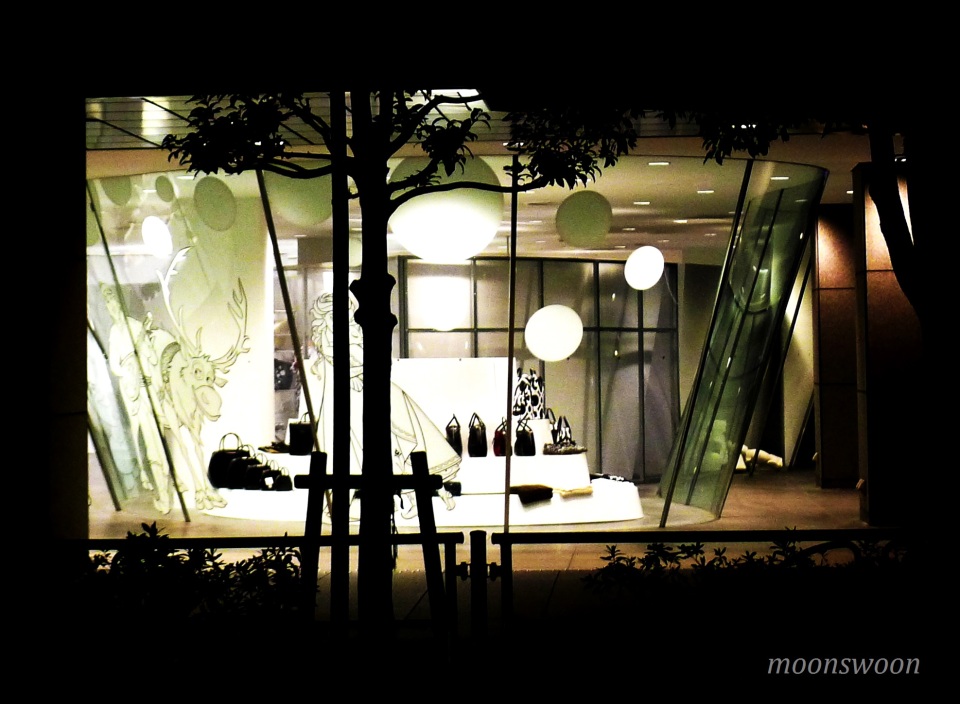
Tsumori Chisato is another famous Japanese designer who started her career with Issey Miyake, Japan’s most famous designer. Tsumori Chisato’s bohemian style gained strong followers in Europe and North America since its launch in 1990.This is her shop in Aoyama, her first boutique store.
Tokyo indulges in the articles of fashion fetish. It revels in the fast-paced trends…and definitely enthralls the world with its unique youth fashion scene. Takeshita-dori is one of the favorites of Tokyo youngsters because of its line of funky boutiques. The great thing I missed was a Sunday afternoon at Harajuku where cosplayers usually gather in this center of teenage culture.
To know more about Japanese fashion, you can visit the following sites:
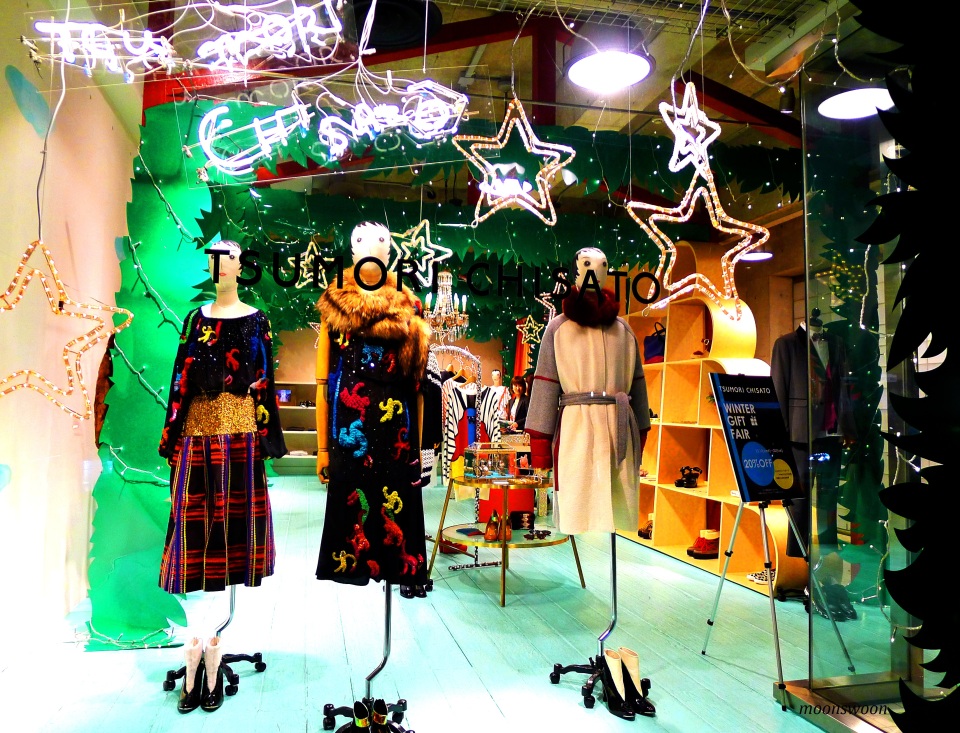
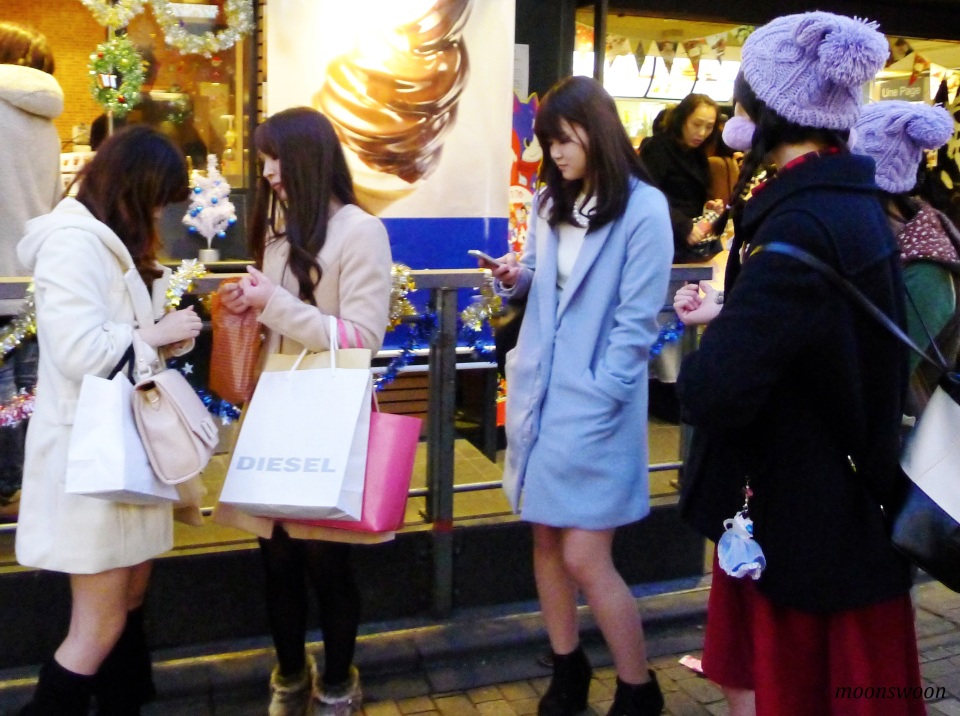
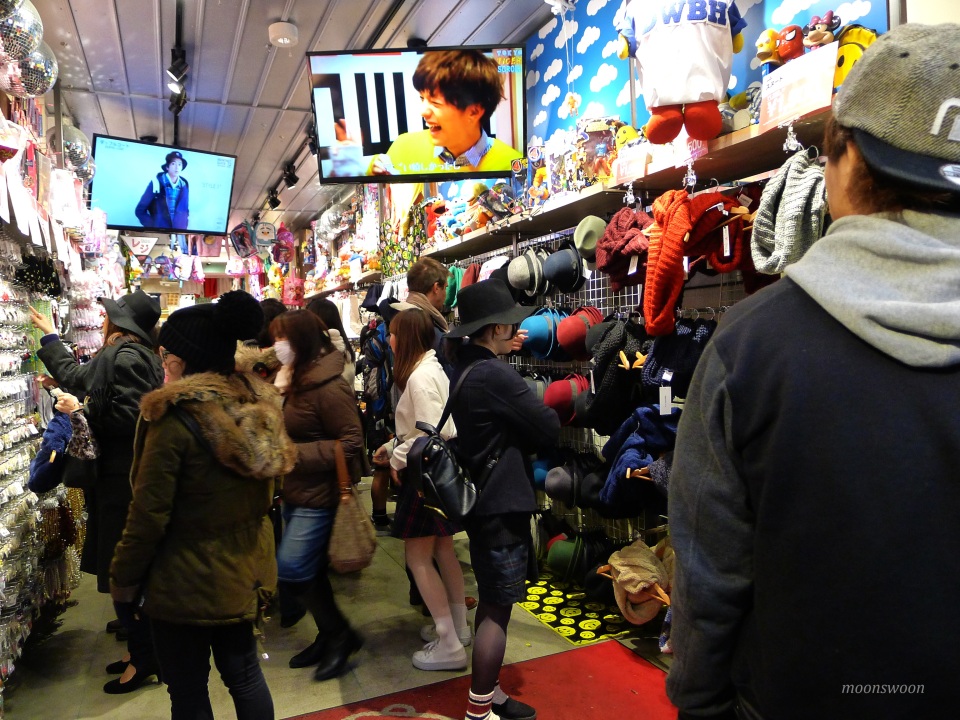
Another interesting post here. It is sad as Japanese that less people wear kimono even for special occasions now. There are many rules how to wear or what kimono is good for what occasion etc… Also kimono is expensive. These are also the reasons that young people do not wear kimono.
Regarding Japanese young people’s fashion, their fashion or culture are totally different from my generation (I am in my early 40’s)..Omotesando is my favorite place and I often go there but it is also very interesting for me to see young people in “strange” clothes…(Sometimes it is unacceptable or shocking though…)
Kimonos are beautiful! I like its classic silhouette and simple robe concept. The nature-inspired designs are so nice and they have interesting meanings, such as endurance for a pine tree, long life for a shellfish, etc. It is still one of the popular symbols of Japan. I think a short kimono is so cute with denim pants. Domo arigatou gozaimasu!
Americans of strong Japanese descent wear some of the most beautiful clothing here in the US. I enjoy watching older Japanese movies partly because of the significance of the kimono to the time period. Thanks so much for this well organized historical post. You photos are fantastic too.
Thank you very much! It is very interesting to know more about a rich culture. Kimono is not only an item of fashion…its design can transform it into an art form. Well, they had an elegant society even during the ancient times. Their women had incredibly elaborate wardrobe and coiffures, with fashionable wooden combs. It’s so amusing that those women at the imperial court would wear twelve layers of different colors of silk robes and would hang the sleeves over the windows of their carriages.
Thanks so much for this info and I’m enjoying your blog.
You’re welcome! Thanks again!
Nice to read about Japanese fashion….also an undeniable part of Japan’s culture!
Even with its rapid modernization, Japan has been able to maintain strong connections with its past and their kimono is one of the integral parts of their cultural fabric.
Very interesting post! Commes de Garcons is one of my fav brands, and I think is amazing how the Japanese can re-create fashion over, and over, for centuries.
Their fashion scene is so fascinating! From the old kimono to the funky styles of the young Japanese in Harajuku to the lovely couture labels like Comme des Garcons. Thank you very much!
Reblogged this on Ancien Hippie.
Thank you very much for re-blogging my post. I truly appreciate!
Thanks for the virtual trip to Japan.
It’s awesome to experience Japan’s cultural and historical wonders. How I wish I could have shared more as there are still many places in Japan with amazing sceneries that I have not explored. Thank you very much!
I like your post on Japanese fashion. Thanks for visiting my blog. Your post is fabulous!
You’re welcome and thank you very much too! The Japanese flair for fashion, from hair to clothes to accessories, is simply fascinating! Their hair was also considered as a vital element of beauty. During the Heian period, they already had numerous types of those fashionable wood combs called “kushi”. They also had those folding fans with artistic designs called “sensu” which they started using since the seventh century . Even the umbrellas called “kasa” were part of their fashion statement. These accessories already became cultural elements since these have been used from ancient to these modern times.
I had an opportunity to dress in rental Kimono and walked around Kiyuzumira temples in Kyoto. It was an amazing experience. It’s a fact that western influence has changed traditional customs of dressing all over the world, the price we pay for modernization. Back to Kimonos, it was a revelation that the outfit requires so many layers of clothing and special skills. It truly was a privileged to experience this fabulous Japanese tradition.
If you want to see me and hubby dressed in Kimonos, you can visit http://www.ramonadetravels.wordpress, and look for blog ” Walking the Streets of Kyoto in Style”.
Japan has that conscious blend of the old and new. So despite of the encroachment of the modern Western styles…or their own homegrown labels…or that eccentric Harajuku fashion scene…the kimono is still a strong symbol of its culture and it is still worn in special occasions, with the form still the same as worn by their ancestors.
I visited your blog and enjoyed reading your articles. I never had the chance to wear a kimono when I was in Tokyo but it sure was a great experience for you to wear it! Thank you very much!